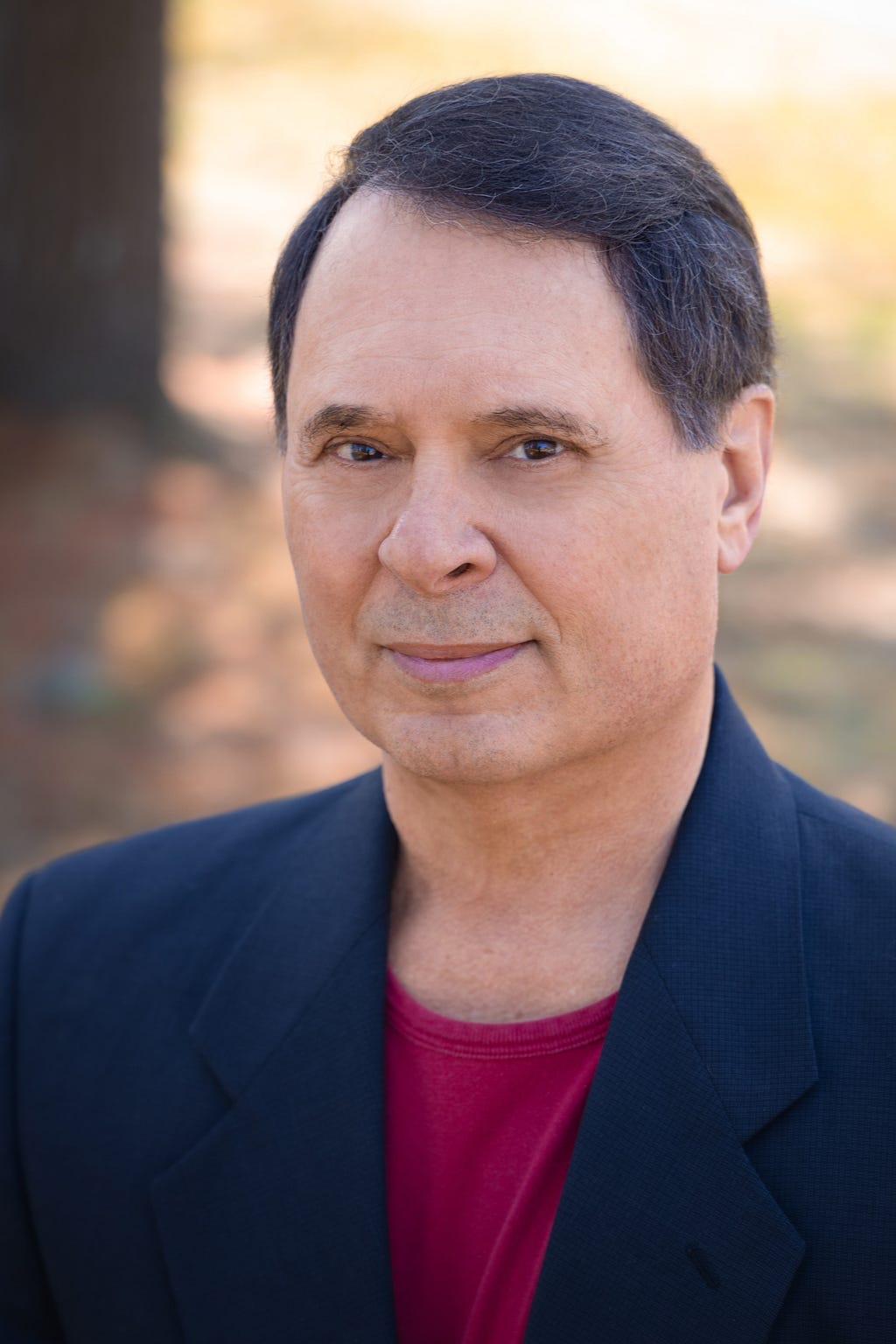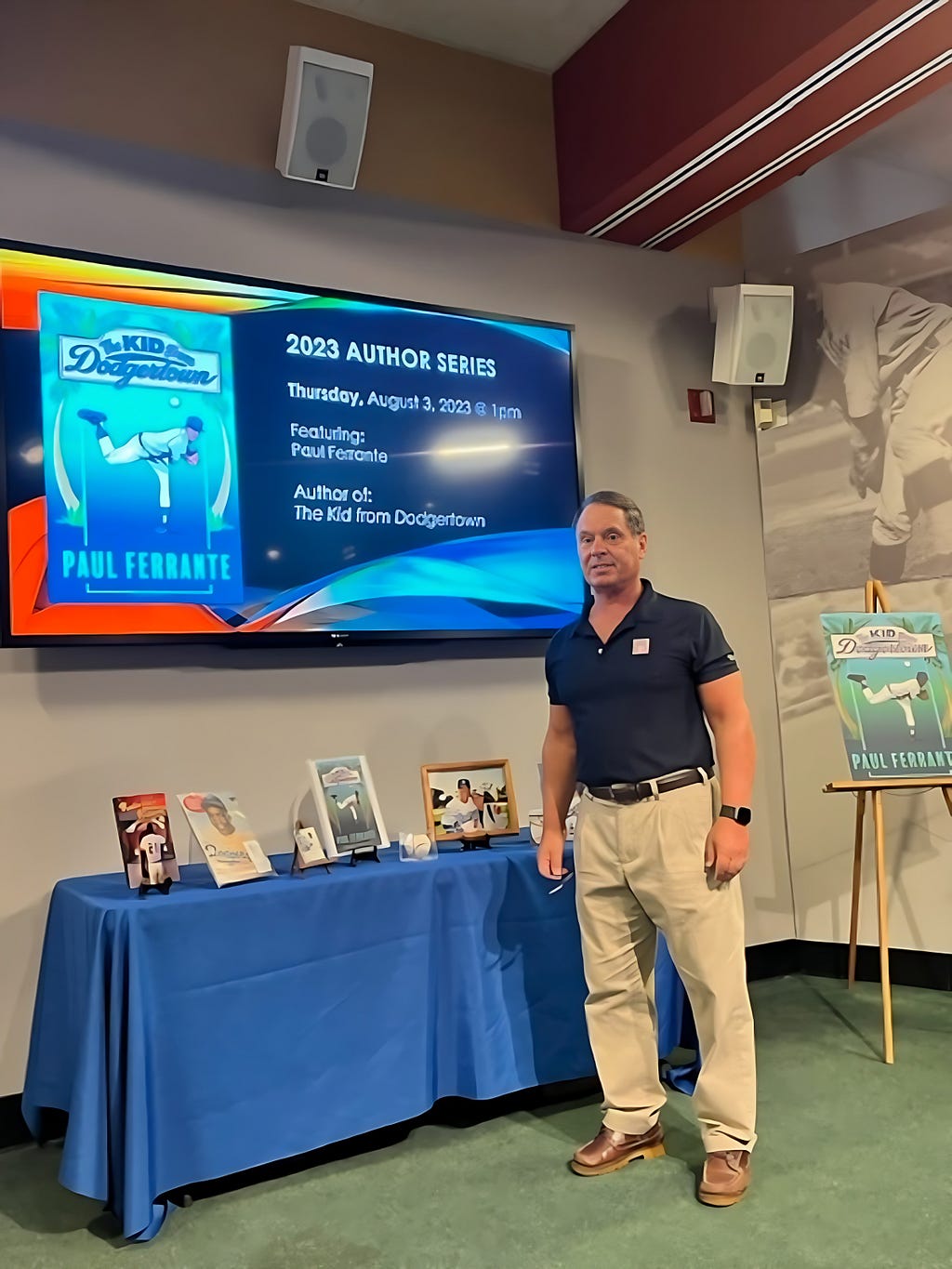
Make a conscious effort to try to learn mor about people who are unlike you. For me, this came through my years of teaching in radically different places.
An upstander is the opposite of a bystander. A bystander is someone who stands by while others are being bullied, maligned, or mistreated. An upstander is someone who stands up to protect and advocate for the victim. We are sadly seeing a surge of hate, both online and in the real world. Many vulnerable minorities feel threatened and under attack. What measures are individuals, communities, and organizations taking to stand up against Antisemitism, Racism, Bigotry, and Hate? In this interview series, we are talking to activists, community leaders, and individuals who are Upstanders against hate, to share what they are doing and to inspire others to do the same. As part of this series, we had the pleasure of interviewing Paul Ferrante.
He is a retired career secondary school teacher and athletic coach. He is also the author of 11 books ranging in age from young adult to adult. His subjects vary widely, from sports to the paranormal to civil rights.
Thank you so much for doing this with us! Before we dive in, our readers would love to get to know you a bit better. Can you tell us your “Origin Story”? Can you tell us the story of how you grew up?
I am originally from the Bronx, NY, and grew up in the upscale town of Pelham in Westchester County. My cultural background is middle class Italian-American Catholic. I attended high school and played baseball and football at Pelham Memorial HS. Although this experience was great, my experiences lacked any sense of cultural diversity. It was not until I attended Iona College (NY) that I actually had African-American teammates. Then, my first teaching/coaching experience was in the Bronx (high school), where my students were 1/3 Latino, 1/3 Black, and 1/3 White. Later, I would teach in an inner city public school (98% Black) for 12 years before ending up in one of the wealthiest, non-diverse towns in the US, Westport, CT. These many stops along the way shaped my views on diversity, inclusion, etc.
Can you share a personal story of how you experienced or encountered antisemitism, racism, bigotry, or hate? How did that experience shape your perception and actions moving forward?
While I was teaching, no matter where the venue, I always included the themes of diversity and inclusion into my curriculum. I even won awards for these efforts. However, my biggest disappointment came as a writer when my teen novel “The Girl Who Stole J.E.B. Stuart” was virtually banned throughout my school district (Westport) and was ignored by some of the same people who had actually given me the awards for promoting cultural diversity! It’s the story of a girl from the Democratic Republic of the Congo who comes to the US in 2012 to spend her senior year as an exchange student in a small town in South Carolina, only to finds that her experience in the formerly apartheid DAR isn’t much different that that of her new school, where the culture of the Confederacy is celebrated. There is no sex, violence or vulgarity in the story. I felt this book would be a perfect tool for prompting class discussion on inclusion, diversity, etc. I even included class discussion questions at the end. But the reception, if there was any, was cold or indifferent from local schools, libraries and local media in Connecticut, even though one church chose it for its “one church, one book” program, though the book makes almost no mention of religion! Of course, this rejection only strengthened my resolve to promote these themes in my writing.
Can you describe how you or your organization is helping to stand up against hate? What inspired you to take up this cause?
I am merely one person, not an organization, but as an author I feel a responsibility to bring these topics to light. This responsibility comes from my experiences while teaching and coaching disadvantaged students in the inner city. As a result, the majority of my novels, whether for teens or adults, deal with these themes.
Can you tell us the most interesting story that happened to you since you began your work as an Upstander?
My most interesting (and ultimately exasperating) story involved my repeated efforts to get an organization whose purpose is to promote cultural diversity in Westport, and who had given me a Community Leadership award some years before, to even acknowledge my book by at least discussing it with me. Furthermore, my own Language Arts coordinator, after receiving an advance copy of my book for review, stopped talking to me, and was of no help in getting the book into our district’s schools. This from a place that claims to be interested in promoting cultural diversity.
Could you share an inspiring story that demonstrates the impact your efforts have had on an individual or community?
In the early 2000s my students in Westport did a project where they researched players of the baseball Negro Leagues, and then created poster-sized postage stamps depicting the players, which were displayed in the local US Post Office. This touched off a controversy in the local paper from people who felt that spotlighting such “unworthy” subjects was a waste of time. Of course, the students were hurt, and their parents fired back. Bottom line, the projects were praised by the Negro Leagues Museum in Kansas City, MO, the students and I received a letter of support from Mrs. Rachel Robinson, and I ended up getting the award I have previously mentioned. What’s even more rewarding is the close ties I have maintained with my students and players from my inner-city days. I guess they judged my empathy for them to be genuine.
In your opinion, why do you think there has been such a surge of antisemitism, racism, bigotry, & hate, recently?
Of course, this has all ramped up in the last seven or so years due to our nation’s political climate, but as I learned the hard way, it’s always been there, barely under the surface, in the North as well as the South.
Are there three things the community/society/politicians can do to help you address the root of the problem you are trying to solve?
Yes. Above all, make reading materials that will encourage discussion of these themes available to students, instead of isolating them from reality.

What are your “5 Things Everyone Can Do To Be An Upstander”? If you can, please share a story or an example for each.
1 . Speak up. If you see an injustice, make that known to the powers-that-be.
2 . Encourage free speech through books instead of banning them.
3 . Make a conscious effort to try to learn mor about people who are unlike you. For me, this came through my years of teaching in radically different places.
4 . Try to help, even in the smallest way, those you encounter who are the subject of cultural/ethnic/ religious/racial bias.
5 . Stand by your convictions and don’t back away from them.
How do you handle the emotional toll that comes with being an Upstander?
Well, one would think that after the experience with my “Jeb” novel I would be discouraged and give up the cause, but my next book, “The Kid from Dodgertown,” which chronicles a story of integration in the South in the 1940s, comes back to the same themes of the necessity for cultural acceptance and empathy. There is a toll, but you have to be willing to keep at it.
If you were in charge of the major social media companies, what would you do to address the hate on the platforms? Could you share specific strategies or policies that you believe would be effective in addressing hate on social media platforms?
Social media platforms should be more strictly monitored for material promoting hate or racism in any form.
How would you answer someone who says: “Hate speech is permitted under the US Constitution. Why are you so worried about permitted, and legal speech?”
I don’t believe the right to belittle or devalue others is in our Constitution. People who hide behind the above premise are at best misinformed and at worst pathetic.
Are you optimistic that we can solve this problem in the United States? Can you please explain what you mean?
Of course I’m optimistic, but the government isn’t going to solve this problem. We have to look inside ourselves for the solutions, which will not come easily. Parents and teachers are the key.
What advice would you give to someone who wants to become an Upstander but doesn’t know where to start?
Just look around you and try to see the landscape through another’s eyes. You’ll have plenty to work with, believe me.
In what ways can education be leveraged to combat antisemitism, racism, bigotry, and hate?
Again, don’t ban books from students. Let students be exposed to different religions, cultures and lifestyles. And don’t be afraid to discuss diversity in the classroom.
Can you please give us your favorite “Life Lesson Quote”? Can you share how that was relevant to you in your life?
“On the plains of hesitation bleach the bones of countless millions who, at the dawn of victory, sat down to rest, and resting… died.” In other words, don’t be afraid to press ahead, even if your situation would be easier if you just “go with the flow.” I’ve lived by this credo in my years as an athlete, coach, teacher, and writer.
Is there a person in the world, or in the US with whom you would like to have a private breakfast or lunch with, and why? He or she might just see this, especially if we tag them. 🙂
Believe it or not, I’d love to speak to Oprah Winfrey, and ask her, as an author who’s trying to make a difference, what I did wrong — and what I need to do better — to get my message out to schools across the country.
How can our readers further follow your work online?
My author website is www.paulferranteauthor.com.
This was very meaningful, thank you so much. We wish you only continued success in your important work!
You’re welcome. I hope something comes of this.
Upstanders: How Paul Ferrante Is Standing Up Against Antisemitism, Racism, Bigotry, and Hate was originally published in Authority Magazine on Medium, where people are continuing the conversation by highlighting and responding to this story.
